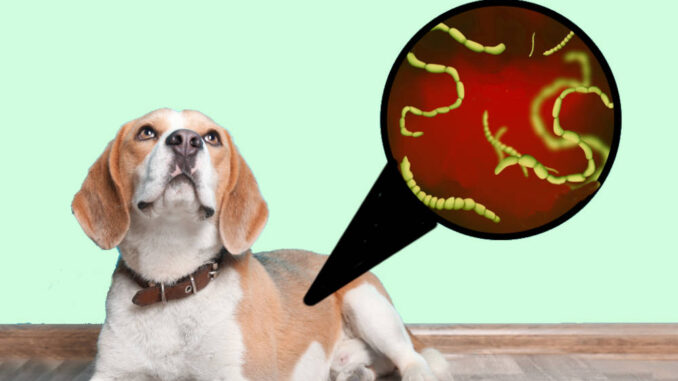
This article was updated on May 21st, 2024

Spotting worms in your dog’s stool can be unsettling. As a veterinarian, I’ve curated this visual guide with clear pictures of worms in dog’s poop, to help you identify these pesky parasites. We will review pictures of roundworms, whipworms, tapeworms and hookworms, and discuss what you can do to help your dog.
What do worms look like in dog poop?
The appearance of intestinal parasites in your dog’s poop/stool will depend on the type of worm. Here are the most common types of worms and their typical appearances in dog stools:
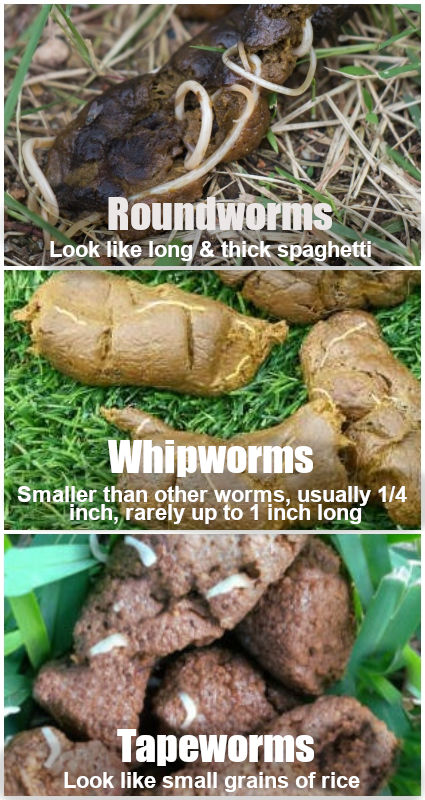
Scroll down for more pictures
How bad is it if I see worms in my dog’s stools?
- Worms in dogs are unpleasant but usually not an emergency.
- No need to visit an out-of-hours veterinarian immediately if you spot worms during an evening walk.
- However, avoid delaying treatment, as worms can multiply and cause your dog to become unwell. Seek treatment urgently if your dog shows other signs of illness.
- A young puppy with a heavy parasite burden should be seen by a vet the same day.
Is there any over-the-counter (OTC) medication that I can use?
Yes, there are vet-approved OTC de-wormers that can be bought from pet shops, online stores or vet clinics. You should always call your vet before giving your dog any medication.
Should I take my dog to the vet?
Yes, because your vet can recommend a safe and effective worm remedy and ensure that your dog is in otherwise good health. Your vet will recommend medication based on your dog’s age, breed and type of worms.
Vets will often give broad acting de-wormers (like Fenbendazole), that target the most common worms. Sometimes, they will use a more targeted therapy such as Praziquantal for tapeworm or Febantel for roundworm.
Most common types of worms found in dog stools [with more pictures]
It’s important to identify that type of worms you may have just seen in your dog’s poop. Let’s review the most common types – with more pictures and treatment information:
1. Roundworms (estimated 35% of cases)
Roundworms are the most commonly found intestinal parasite in our canine companions; many dogs will have them at some point in their lives. Roundworms resemble thick pieces of spaghetti and can be up to several inches long. They are usually light tan or white in color, as shown in the picture below:
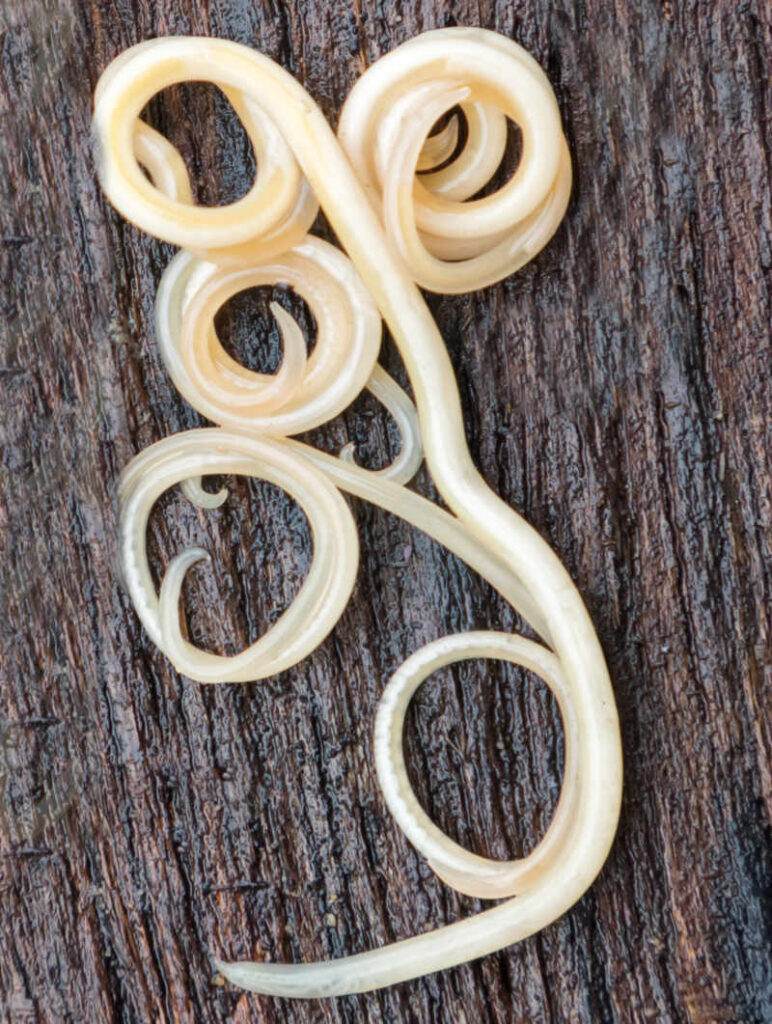
Below are two pictures of roundworms in a dog’s poop (stools): they tend to be about the thickness of a pencil (or slightly smaller) and long like this:
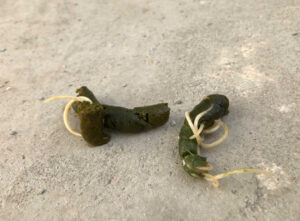
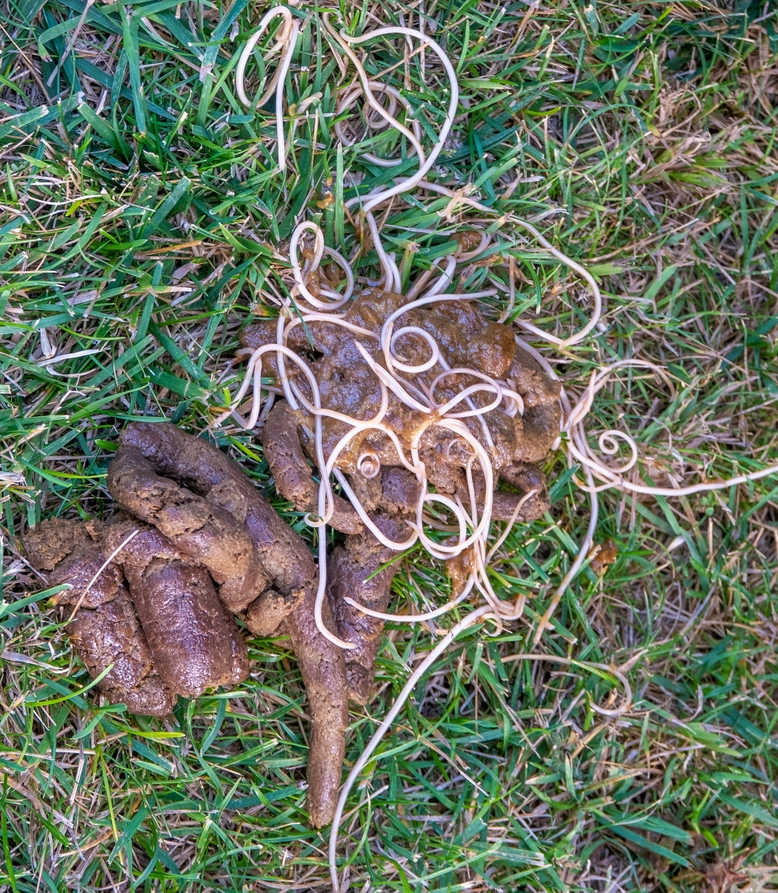
The two most common species seen in dogs are Toxascaris leonina and Toxocara canis. These worms feed off partially digested food in the intestines, diverting essential nutrients from dog to worm. Roundworms are especially problematic in puppies, since puppies tend to have weaker immune systems than adult dogs.
Frequent clinical signs include:
- Poor or stunted growth in puppies
- Weight loss
- Potbelly appearance
- Worms in stool (or vomit)
Click here to learn more about roundworms in dog’s poop (including recommended treatments and costs).
2. Whipworms (est. 34% of cases)
Whipworms in dog stools are not easily visible due to their small size. They are significantly smaller than other worms, topping off around 1/4 inch, with very few up to an inch long. Below is a picture of what they look like:
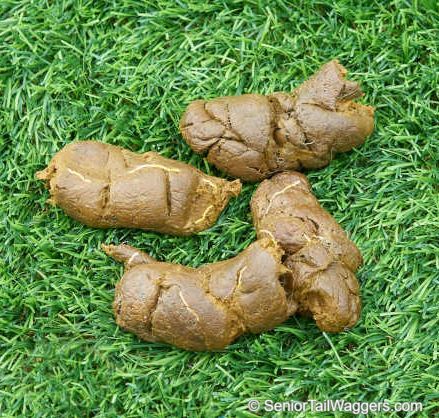
Trichuris vulpis is the whipworm that commonly infects dogs; it lives in the dog’s large intestine and buries its head into the intestinal mucosa, feeding on the dog’s blood supply and causing severe inflammation.
Eggs are passed in the dog’s stool and become infective over the next 2-4 weeks. Contaminated soil is infective, but newly passed feces are not.
Female whipworms intermittently shed small numbers of eggs, meaning the eggs may not always be seen on a fecal test when looking for parasites, even if the dog is infected; this often leads to a false negative. Often, vets treat dogs with chronic diarrhea with a broad-spectrum dewormer if an intestinal parasite is suspected but not seen on the fecal test.
A large infestation may show the following symptoms:
- Watery, bloody diarrhea
- Weight loss and decrease in body condition overall
3. Tapeworms (est. 14% of cases)
Tapeworms are not often seen in complete worm form. Usually, owners will notice individual tapeworm segments that look like a single grain of rice. These may be around the dog’s anus, sticking to the surrounding fur, or even in the dog’s bed. Below is a picture of tapeworms in a dog’s poop:
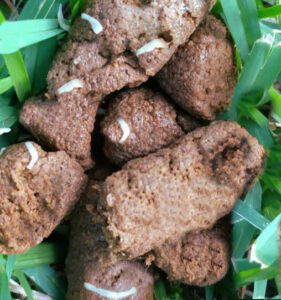
Tapeworms are flat, segmented intestinal parasites that pass their eggs in segments called proglottids. These segments look like rice grains. Often we don’t see the entire tapeworm passed in our dog’s stool, but the proglottid segments are visible in stool or around the dog’s anus and fur.
Proglottids contain tapeworm eggs and can be typically seen near the anus or on fresh dog poop, as showcased in the picture below:
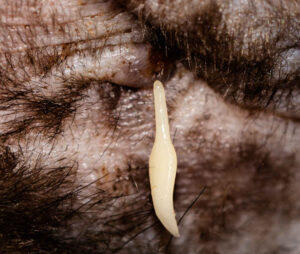
Watch it live in action – on dog’s poop – with this short video from Veterinary Parasitology. If your dog is a puppy, read our article about puppies with tapeworms in stools.
Serious side effects are rare. Usually, the owner only notices them because they find the segments in the stool, on the dog’s back end, or in bedding. The dog may also scoot on the ground or bite at his back end to relieve the skin irritation from the tapeworms.
So how does your dog get tapeworms? Typically your dog transmits tapeworms by ingesting an infected flea (occasionally by eating an infected rodent or bird). The life cycle and transmission of the tapeworm are closely tied to fleas, so flea prevention is vital in preventing tapeworms.
Tapeworms are more likely to infect dogs that live in areas with heavy flea populations. You will probably need to treat your dog (and home and environment) for fleas: even after treatment, dogs can immediately reinfect themselves if infected fleas are still in the environment.
Dogs need to be treated with a prescription medication called praziquantel. This medication starts working immediately; typically, dead worms aren’t seen in the dog’s stool because they are dissolved and digested in the dog’s intestines.
How to tell the difference between tapeworms or whipworms
Owners sometimes confuse tapeworms and whipworms. Tapeworms appear as small, white segments, resembling grains of rice, while whipworms are thread-like but are rarely visible as they are usually embedded in the stool. See the difference in the 2 pictures below:
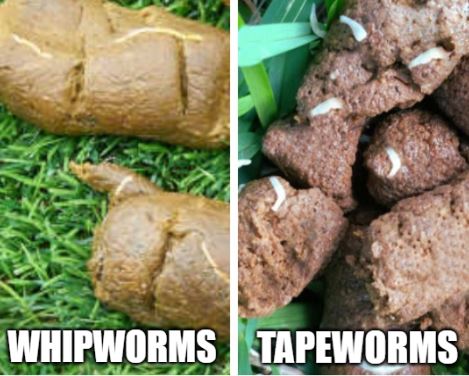
4. Hookworms
Hookworms are tiny – often only 1/8″ long – so they are not usually “seen” in dogs’ stools. They have tiny hooks on their mouth, usually only seen when the worm is viewed under a microscope.
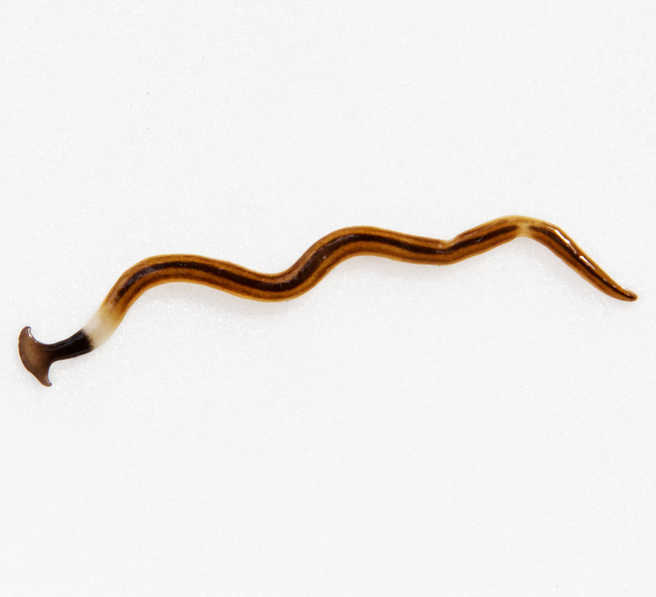
Hookworms are some of the smallest intestinal parasites that affect dogs but can have a significant negative impact on the dog’s health. They can be especially deadly to puppies, causing so much internal blood loss that they need a blood transfusion to survive. Learn more about hookworms.
What to do if You See Worms in Your Dog’s Poop?
If you notice worms in your dog’s poop, you’re obviously going to want to get rid of them. While you may find many at-home remedies online, your best bet is to see your veterinarian:
- Natural remedies may be harmful to your pup.
- Over-the-counter medication may work but can be unsafe: make sure you talk to your vet before giving your dog any medication.
Fecal tests can confirm what types you are dealing with
If your pup has recently been to see the vet, some clinics will allow you to bring in a fecal sample and have it tested without putting your dog through the full exam with all of the fixings. However, if it’s been a year or more, your pup will have to join you.
You can take a small, fresh sample of stool to your vet’s office; you only need a few tablespoons for the test. Typically, fecal tests can be done in-house, meaning your vet runs the test right there, and you get results that day (often during your appointment). A standard fecal test costs around $25-$50.
Often, more advanced fecal testing, which looks for the DNA of parasites, will be performed by sending the feces to a lab. This is much more accurate as there may not be a worm egg in every small sample of feces, and it typically costs $50-$90.
Important tips
Your veterinarian will have a variety of dewormers that can treat a roundworm infection. Tapeworms are one of the few intestinal parasites that often need a different, specific medication not included in routine dewormers.
Most dewormers will start to work within hours, but it may take a few days for all the worms to clear. Because the worms are often killed and digested in the intestines following treatment, you won’t always see them in your dog’s poop after treatment.
Treatment costs will vary widely by the size of your dog, the type of medication required, and how many doses your dog needs. A general range is $35-$60 (in addition to the price of the consultation).
After treatment, it is important to do another fecal test to ensure there are no lingering worms.
When to call your veterinarian
There are a few indicators that you should schedule an appointment for your dog:
- You see worms in the poop – this one is obvious. Worms are not a normal finding, so your dog needs medication.
- Rounded belly
- Diarrhea, soft stool, or blood in the poop
- Dull, lackluster coat
- Poor growth, weight loss
- Changes in appetite and energy
Is it intestinal worms, or is it something else?
Typically, worms in the poop are pretty obvious. There are a few things veterinarians see that may mimic worms, however.
- String – While this is more common in cats that play with and eat string, your dog can chew a string and pass it in large pieces in the poop.
- Rice or other undigested food – Undigested rice often has a tapeworm-like appearance. Some owners will notice this when their dog has been eating a bland diet of rice and chicken.
- Chewed-up toy or bone – Much like a string, a chewed-up toy or pieces of bone could mimic a worm.
- Maggots in poop – Poop that has been left outside for long periods can occasionally develop maggots. Flies lay their eggs in the dog’s stool that is in the yard; these eggs then develop into larvae.
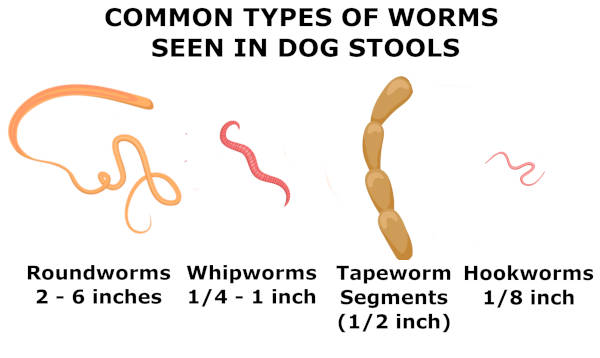
How do dogs get worms?
Many types of worms, including roundworms and hookworms, can lay eggs that end up in the soil or in feces. Dogs eating contaminated soil or feces can become infected. Tapeworms, roundworms and hookworms can be transmitted to dogs who eat infected rodents or fleas. Puppies can also get them from their mother, either while they’re still in the womb or through her milk after they’re born (This is a common way for puppies to get roundworms). Some worms, like hookworms, can penetrate the skin: a dog walking or laying on infected soil can get them.

Prevention
Parasite prevention is relatively easy with your local veterinary clinic’s routine fecal tests and deworming treatments. There are no foolproof steps – with routine dewormers, dogs can still contract intestinal parasites from places like parks, daycares, and boarding, even from the yard through infected soil or feces.
Your veterinarian may recommend a routine dewormer depending on your region and the fecal test results. Many monthly heartworm medications also protect against numerous intestinal worms as well. Do not give over-the-counter deworming products – there has been some evidence of resistance to these medications, meaning they may kill some of the parasites your dog has but leave behind resistant ones.
Are these worms transmissible to humans?
Yes, all of these parasites are transmissible to humans – for example, roundworms can cause permanent blindness in humans.
What can you do at home to help prevent parasites?
Picking up feces soon after your dog has gone out helps prevent environmental contamination. By picking up feces, your dog is less likely to be re-infected, either from their own infected poop or that of other dogs. It is also essential to protect your dog with prevention in the form of heart worm preventatives. These medications will continually deworm your dog and prevent an infestation. Flea control is also important.
References
Prevalence of common canine gastrointestinal nematodes in the USA
Related posts:
Disclaimer: This website's content is not a substitute for veterinary care. Always consult with your veterinarian for healthcare decisions. Read More.

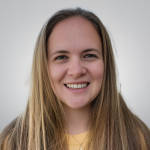

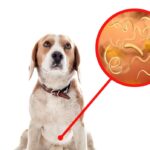
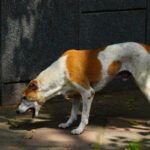
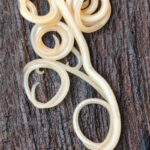
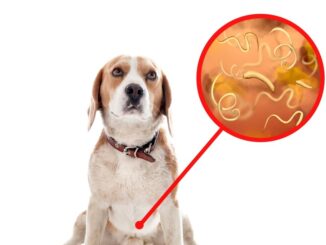


Be the first to comment